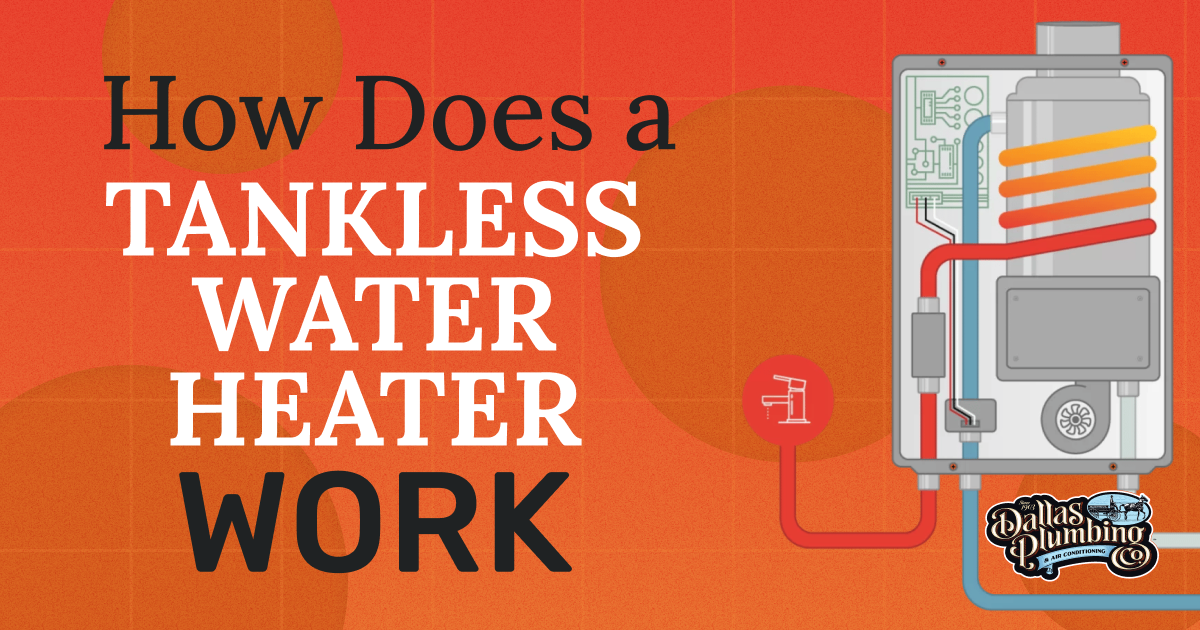How does a tankless water heater work?
A Brief History of Tankless Water Heaters
The Essential Components of the Tankless Water Heater
Bringing All Tankless Water Heater Parts Together
FAQ: Tankless Water Heaters
How does a tankless water heater work?
The world of home appliances is rapidly evolving, with new inventions making it to the market frequently. However, despite all the inventions, the tankless water heater has remained a popular choice among many homeowners and plumbers. This blog post will spotlight the wonder of the tankless water heater, exploring its history and the intricacies of its function.
A Brief History of Tankless Water Heaters
Water heater systems have been around since ancient times when various civilizations used rudimentary approaches for heating water for bathing and domestic purposes. The modern, technologically advanced water heater as we know it today was developed and patented in 1889 by Edwin Ruud. The earliest form of the water heater was a storage tank that heated and stored water until it was needed.
Thanks to the development of modern technologies and electricity, improvements and innovations have been made to the original water heater. These improvements included the tankless water heater which heats water on demand rather than storing it in a large tank.
The Essential Components of the Tankless Water Heater
Before we dive into the intricacies of the tankless water heater, we will explore its key parts. These key parts include the following:
- Heat Exchanger: It is responsible for transferring heat from the energy source to the water
- Burner or Electric Element: Generate heat with the help of gas or electricity.
- Flow Sensor: Detects when hot water is needed by sensing the flow of water through the unit.
- Temperature Sensor: Monitors the temperature of the outgoing hot water.
- Control Panel: This is the user interface of the tankless water heater.
- Inlet and Outlet Pipes: The inlet pipe brings cold water into the tankless water heater while the outlet pipes carry heated water to the appliances and fixtures throughout the home.
- Venting System: This is essential for gas-powered tankless water heaters because they require proper venting to expel combustion byproducts safely.
- Safety Features: Flame sensors, overheat protection, and pressure relief valves that ensure proper and safe operation.
Bringing All Tankless Water Heater Parts Together
Now that we have the gist of the tankless water heater’s essential parts, we can go ahead and explore how these parts come together to provide your home with the needed hot water.
1. The Heating Process
When you turn on the hot water tap, cold water enters the tankless water heater through a pipe. Inside the unit, a powerful gas burner or electric element heats the water on demand. Inside the unit, the gas burner or electric element heats the water on demand. The heating process is instantaneous, ensuring a constant supply of hot water without the need for preheating.
2. Flow Sensors and Activation
Flow sensors play a crucial role in tankless water heaters. They detect when hot water is needed by sending the water flow. Once the sensors detect the flow, the water heater is activated, and the heating element or burner begins its work. This on-demand activation eliminates the standby energy losses associated with traditional water heaters.
3. Temperature Control
Tankless water heaters come equipped with a temperature control mechanism that allows users to set their desired water temperature. This ensures that you get hot water at the temperature you prefer without the risk of scalding.
FAQ: Tankless Water Heaters
What are the downsides to a tankless water heater?
There are several disadvantages of a tankless water heater, including:
- A higher upfront cost for the purchase and installation of the unit
- They require access to fuel sources
- They require water softeners
Is it worth getting a tankless water heater?
Because tankless water heaters are generally more efficient (about 24% to 34%), they are considered a worthwhile investment.
How big a tankless water heater do I need for a family of 4?
Generally, the size of the water heater you need will depend on the size of the home, the needs of its inhabitants, and the number of appliances that need hot water. On average, you will need a tankless water heater size of 8-10 GMP for a family of four.
Do electric tankless water heaters need to be vented?
Electric water heaters, including tankless ones, do not require ventilation because they do not produce combustion products like gas-powdered units.
Call Dallas Plumbing for Your Tankless Water Heater Needs
Are you in need of repairs or installation of your tankless water heater? Reach out to our team of water heater experts. We will assist you in restoring the proper function of your water heater or handle any installation needs for you.






